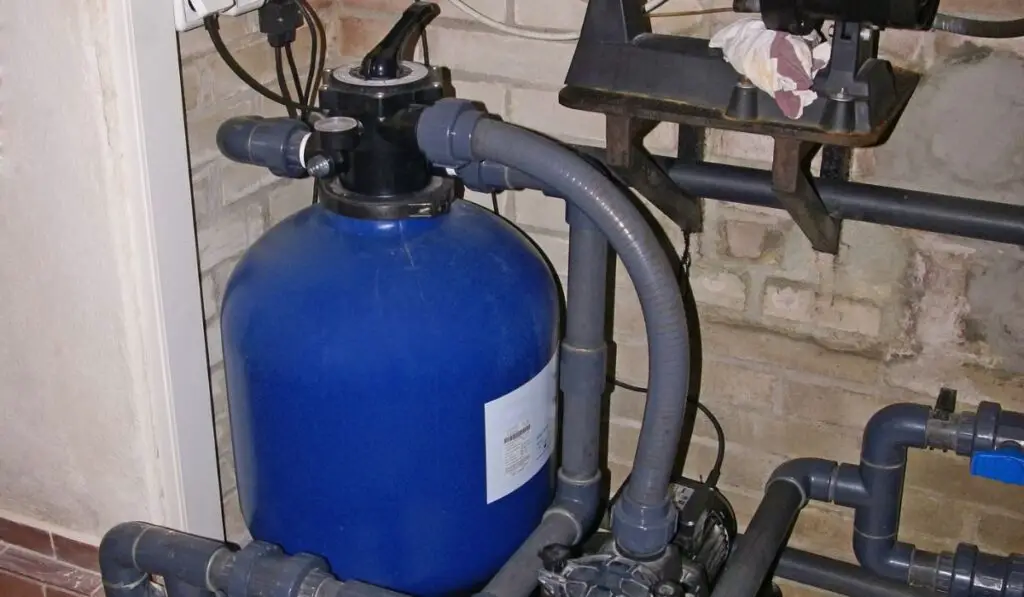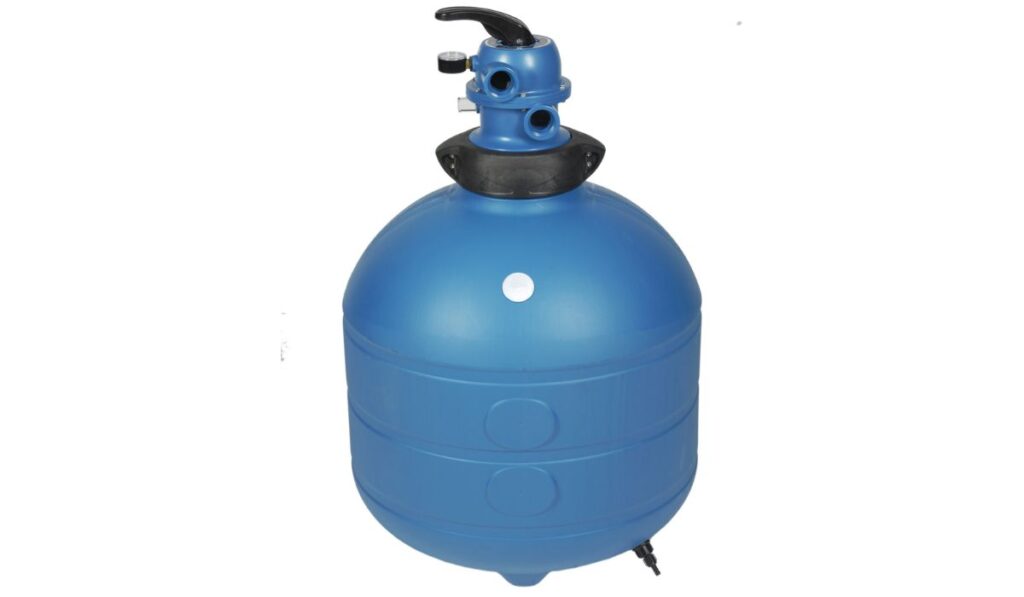Proper pool maintenance is key to enjoying your pool’s benefits without worrying about safety issues and high maintenance costs. That’s where the sand filter comes into the picture. A sand pool filter helps manage your water chemistry and keeps your pool water clean, clear and ready for summertime fun. So, how do you install a sand filter?
Installing a sand filter starts with putting drain and pre-filter assemblies together. You then secure the system to a base plate and set up the pump and control valve. After setting up the filter tank, you add the sand and water, then install the filter valve and the remaining hoses and pipes.
Let’s get into the details of setting up a sand filter for your pool and discuss the types of sand you should use.
What is a Sand Filter?

A sand filter is an egg-shaped tank connected to your pool’s filtration system to clean the water. It works hand in hand with the pump in that it flushes water through the filter. The sand traps the dirt and debris. The pump then returns the purified water to the pool via a different pipe attached to the tank.
What Tools Will You Need?
You’ll need the following tools to make your work installing a sand filter as smooth and painless as possible:
- Screwdriver
- Tarp (on Amazon)
- Hack saw
- Duct tape or plumber’s tape
- O-ring lubricant
- Garden hose
- Pool backwash hose (on Amazon)
How Do You Hook Up a Sand Filter?
Setting up a sand filter for your pool may seem daunting at first, but it’s actually pretty simple.
Here’s how:
Step 1: Unpack and Examine the Parts
Unbox and acquaint yourself with all the parts of the filter system. Go through the manual as well to give you an idea of what the entire process entails. Lay all the parts on a tarp so that they’re easily accessible.
Step 2: Attach the Drain and Pre-Filter Assemblies
The drain and pre-filter assemblies are made for each other, kind of like the yin and yang. They fit together like pieces of a puzzle. Just slide on both of them and ensure they’re secure before moving forward.
Step 3: Secure the System to the Base Plate
The system’s base plate is a flat piece with a similar shape and size as that of your filter. Place it on a level surface for stability and line up that threaded fitting from the base of the pool filter with an opening in a single side section.
Step 4: Set Up the Pump and Control Valve
If your system has fittings and hoses for the pump ports, cover the threads of the fittings with plumber’s tape and attach them to the appropriate ports. If there are hose clamps, use them to secure the hoses onto the fittings.
If you’re using PVC pipes instead of hoses, cut the pipes to sufficient lengths using a hacksaw (on Amazon) and assemble using PVC adhesive and primer.
Step 5: Set Up the Filter Tank
Place the standpipe in the filter tank. You may need to attach laterals at the bottom of the standpipe inside the tank, or the laterals may come attached already. If your filter system doesn’t have a cover to prevent sand from entering the standpipe, wrap it with duct tape.
Step 6: Add the Filter Sand and Water
Before adding sand and water, make sure you position the standpipe correctly, as you won’t be able to adjust it afterward. The system may have an air relief tube that you’ll have to hold above the sand as you add it. Now start pouring the sand until it reaches the correct level mentioned in the instruction manual.
Avoid overfilling the sand since too much sand will damage the system. Once you’ve added the right amount of sand, remove the tape from the standpipe and spread the sand evenly.
Use the garden hose to add water to the filter tank until it’s just below the standpipe opening.
Step 7: Install the Filter Valve
Sparingly apply O-ring lubricant (on Amazon) to the valve O-ring and install it on the valve. Verify that the ports on the valve (return, waste and pump) are aligned correctly and slide the valve onto the top of the standpipe. Don’t pull the standpipe — you’ll damage it, and sand will get into the pool.
Attach the valve to the filter tank tightly and secure it with the clamp, just like in the manual. If the pressure gauge isn’t pre-installed, wrap plumber’s tape (also on Amazon) onto the threads on the device and install it on the valve.
Step 8: Install the Remaining Hoses/Pipes
Attach the rest of the hoses or PVC pipes:
- From the return port on the valve to your pool’s inlet fitting.
- From the pump suction port to the pool suction outlet/pool skimmer.
- From the pump discharge port to the pump port on the valve.
Check that the hoses and pipes in the system have enough support to minimize stress on the connections.
How Often Do You Need to Change Your Sand Filter?

Sand filters often work efficiently for around three to seven years, depending on use. If you frequently clean and backwash your filter and only use the pool during certain seasons, you can bank on replacing your sand filter after at least five years.
What Type of Sand Should You Use?
The sand filter doesn’t just use any sand. Only three types of sand can work as filter media. They are:
How to Choose the Right Filter for Your Pool Type
As it turns out, choosing the right size pool filter isn’t always a walk in the park. Before settling on a particular filter, ensure you have the right pool pump, as the filter won’t work properly if the pump isn’t the correct size for your pool.
Furthermore, you’ll have to select a larger filter to handle your pump’s power comfortably. As a rule of thumb, go for a filter with at least one square foot per 10,000 gallons pool capacity.
